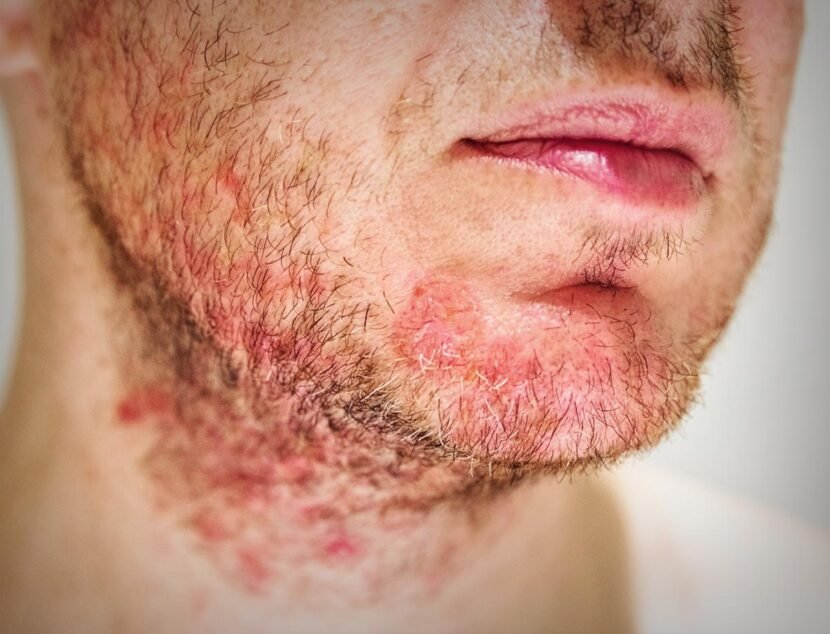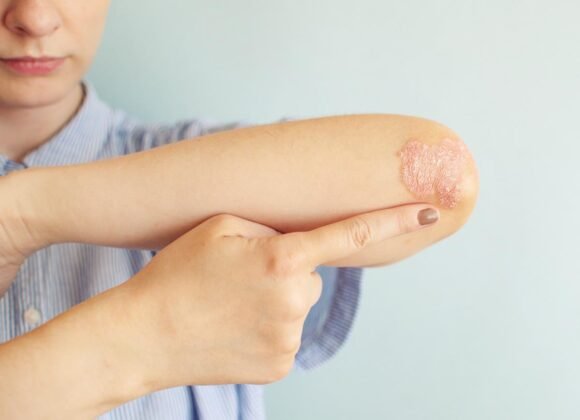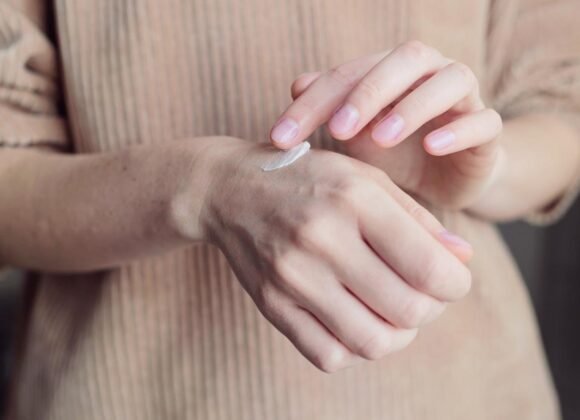Seborrheic dermatitis is a prevalent skin disorder primarily affecting the scalp, resulting in dandruff and occasionally causing itching, redness, and scaling. This condition can also manifest in other body areas, including the face, ears, chest, and back. While the precise etiology of seborrheic dermatitis remains unclear, it is hypothesized to be associated with an overgrowth of yeast on the skin, an inflammatory response, and excessive sebum production by the sebaceous glands.
Seborrheic dermatitis is non-contagious and can affect individuals of all ages, from infants to the elderly. This condition often follows a chronic course, characterized by periods of exacerbation and remission. It is crucial to consult a healthcare professional if seborrheic dermatitis is suspected, as it may be confused with other skin conditions such as psoriasis or eczema.
A medical expert can provide an accurate diagnosis and recommend suitable treatments to manage symptoms and prevent recurrences.
Key Takeaways
- Seborrheic dermatitis is a common skin condition that causes redness, itching, and flaking, often occurring on the scalp, face, and chest.
- Symptoms of seborrheic dermatitis include dandruff, greasy skin, redness, and stubborn patches of flaky skin.
- Treatment for seborrheic dermatitis may include medicated shampoos, topical creams, and antifungal medications.
- Causes of seborrheic dermatitis may include genetics, stress, and certain medical conditions.
- Eczema symptoms can include dry, itchy, and inflamed skin, often appearing in patches on the hands, feet, and face.
- Treatment for eczema may involve moisturizing creams, topical corticosteroids, and antihistamines to relieve itching.
- Causes of eczema may include genetics, environmental factors, and a compromised immune system.
Symptoms of Seborrheic Dermatitis
Symptoms on the Scalp
On the scalp, seborrheic dermatitis can cause dandruff, characterized by white or yellow flakes of skin that may be accompanied by itching. In more severe cases, it can lead to thick, crusty scales on the scalp that may bleed when scratched.
Symptoms on the Face and Body
When seborrheic dermatitis affects the face, it typically appears as red, scaly patches on the eyebrows, eyelids, sides of the nose, and behind the ears. In some cases, it can also affect the chest and back, causing red, scaly patches that may be itchy or uncomfortable.
Importance of Medical Advice
It is essential to seek medical advice if you experience these symptoms, as they can be indicative of seborrheic dermatitis or another skin condition that requires treatment.
How to Treat Seborrheic Dermatitis
Treatment for seborrheic dermatitis aims to reduce inflammation, control the overgrowth of yeast on the skin, and manage symptoms such as itching and flaking. Mild cases of seborrheic dermatitis can often be managed with over-the-counter dandruff shampoos that contain ingredients such as selenium sulfide, ketoconazole, or pyrithione zinc. These shampoos can help to reduce flaking and itching and may need to be used regularly to maintain control of symptoms.
In more severe cases, a healthcare professional may recommend prescription-strength shampoos, topical corticosteroids, antifungal creams or lotions, or oral medications to manage symptoms and reduce inflammation. It is important to follow the treatment plan recommended by a healthcare professional and to attend follow-up appointments as directed to monitor the condition and adjust treatment as needed. In addition to medical treatment, there are also self-care measures that can help manage seborrheic dermatitis.
These may include gentle cleansing of the affected areas with a mild soap or cleanser, avoiding harsh skincare products or hair care products that can irritate the skin, and managing stress levels as stress can exacerbate symptoms. It is important to discuss any self-care measures with a healthcare professional to ensure they are appropriate for managing seborrheic dermatitis.
Causes of Seborrheic Dermatitis
The exact cause of seborrheic dermatitis is not fully understood, but it is believed to be related to a combination of factors including an overgrowth of yeast on the skin, an inflammatory response, and an overproduction of oil by the sebaceous glands. Malassezia is a type of yeast that is normally found on the skin and is believed to play a role in the development of seborrheic dermatitis. When there is an overgrowth of this yeast, it can lead to inflammation and irritation of the skin.
In addition to the overgrowth of yeast, seborrheic dermatitis is also associated with an overproduction of oil by the sebaceous glands. This excess oil can contribute to the development of greasy patches on the skin and scalp, as well as contribute to the growth of yeast. It is also believed that an inflammatory response in the skin may play a role in the development of seborrheic dermatitis, although the exact mechanisms are not fully understood.
Other factors that may contribute to the development of seborrheic dermatitis include hormonal changes, stress, certain medical conditions such as Parkinson’s disease or HIV/AIDS, and certain medications such as lithium or psoralen. It is important to seek medical advice if you suspect you have seborrheic dermatitis, as a healthcare professional can provide an accurate diagnosis and recommend appropriate treatment based on the underlying causes.
Eczema Symptoms
Eczema, also known as atopic dermatitis, is a chronic skin condition characterized by dry, itchy skin that can become red, inflamed, and cracked. Eczema can affect people of all ages, from infants to adults, and can occur anywhere on the body. The symptoms of eczema can vary from mild to severe and may include dry, scaly skin; redness; itching; swelling; and oozing or crusting of the skin.
In infants, eczema commonly appears on the face and scalp, while in older children and adults it often affects the hands, feet, elbows, and knees. The symptoms of eczema can be triggered or exacerbated by factors such as dry skin, irritants such as soaps or detergents, allergens such as pet dander or pollen, stress, sweating, and changes in temperature or humidity. It is important to seek medical advice if you suspect you have eczema, as a healthcare professional can provide an accurate diagnosis and recommend appropriate treatment based on the severity of symptoms.
How to Treat Eczema
Managing Mild Eczema
Mild cases of eczema can often be managed with over-the-counter moisturizers or emollients to keep the skin hydrated and reduce dryness. It is important to choose products that are fragrance-free and hypoallergenic to minimize irritation.
Treating Moderate to Severe Eczema
In addition to moisturizers, over-the-counter hydrocortisone creams or ointments may be used to reduce itching and inflammation during flare-ups. In more severe cases of eczema, a healthcare professional may recommend prescription-strength corticosteroid creams or ointments to reduce inflammation and itching. In some cases, topical calcineurin inhibitors may be prescribed to manage symptoms when corticosteroids are not effective or suitable.
Additional Treatment Options and Self-Care Measures
In addition to topical treatments, oral medications such as antihistamines or immunosuppressants may be prescribed in severe cases of eczema. In addition to medical treatment, there are also self-care measures that can help manage eczema. These may include avoiding triggers such as harsh soaps or detergents, wearing soft fabrics such as cotton clothing, using mild cleansers and moisturizers regularly, and managing stress levels as stress can exacerbate symptoms. It is important to discuss any self-care measures with a healthcare professional to ensure they are appropriate for managing eczema.
Causes of Eczema
The exact cause of eczema is not fully understood but is believed to be related to a combination of genetic and environmental factors. People with a family history of eczema or other allergic conditions such as asthma or hay fever are more likely to develop eczema themselves. Eczema is also associated with an overactive immune system that responds abnormally to irritants or allergens by producing inflammation in the skin.
Environmental factors such as dry air, harsh soaps or detergents, certain fabrics such as wool or synthetic fibers, pet dander, pollen, mold, and certain foods can trigger or exacerbate symptoms of eczema in some people. It is important to identify and avoid triggers whenever possible to prevent flare-ups and manage symptoms. In addition to genetic and environmental factors, certain immune system abnormalities may contribute to the development of eczema.
People with eczema have been found to have higher levels of certain immune system proteins that contribute to inflammation in the skin. This abnormal immune response can lead to chronic inflammation and damage to the skin barrier, making it more susceptible to irritants and allergens. In conclusion, seborrheic dermatitis and eczema are common skin conditions that can cause discomfort and affect quality of life for those who suffer from them.
Seeking medical advice for an accurate diagnosis and appropriate treatment is essential for managing these conditions effectively. By understanding the causes and symptoms of these conditions and following a comprehensive treatment plan recommended by a healthcare professional, individuals can manage their symptoms and prevent flare-ups for improved skin health and overall well-being.
FAQs
What is seborrheic dermatitis?
Seborrheic dermatitis is a common skin condition that causes redness, scaly patches, and dandruff. It can occur on the scalp, face, and other areas of the body where there are oil glands.
What is eczema?
Eczema, also known as atopic dermatitis, is a chronic skin condition that causes dry, itchy, and inflamed skin. It can appear anywhere on the body and often occurs in people with a family history of allergies or asthma.
How do the symptoms of seborrheic dermatitis and eczema compare?
Both seborrheic dermatitis and eczema can cause redness, itching, and flaking of the skin. However, seborrheic dermatitis is often characterized by greasy, yellowish scales, while eczema typically presents with dry, scaly patches.
Where does seborrheic dermatitis commonly occur?
Seborrheic dermatitis commonly occurs on the scalp, around the eyebrows, on the sides of the nose, and behind the ears. It can also affect the chest, back, and other areas with oil glands.
Where does eczema commonly occur?
Eczema can occur anywhere on the body, but it is most commonly found on the face, neck, and the insides of the elbows and knees. It can also appear on the hands and feet.
Can seborrheic dermatitis and eczema be treated?
Both seborrheic dermatitis and eczema can be managed with proper skincare and medical treatment. Treatment may include medicated shampoos, topical corticosteroids, antifungal creams, and moisturizers. It is important to consult a healthcare professional for an accurate diagnosis and treatment plan.




